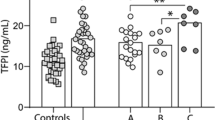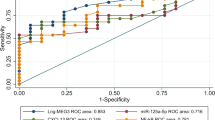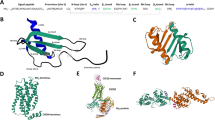Abstract
Aim:
Chemokines usually direct the movement of circulating leukocytes to sites of inflammation or injury. CXCL1/GRO-α has been shown to be upregulated in atherosclerotic lesions and various cancers. The aim of this study was to investigate the mechanisms underlying the TNF-α-induced release of CXCL1 from human vascular endothelial cells in vitro.
Methods:
Human umbilical vein endothelial cells (HUVECs) were treated with different proinflam-matory mediators and growth factors. CXCL1 expression and secretion were determined using RT-PCR and ELISA, respectively. TNF-α-induced cell signaling was assayed with Western blotting. Cell viability/growth was determined using MTT assay. Monocyte migration was measured with transwell migration assay.
Results:
Among the 17 mediators and growth factors tested, TNF-α, LPS and thrombin induced marked increase in CXCL1 release from HUVEC cells. TNF-α (2, 5 ng/mL) induced CXCL1 release and mRNA expression in the cells in concentration- and time-dependent manners. TNF-α (5 ng/mL) caused activation of JNK, p38 MAPK, PI3K and Akt, whereas pretreatment with JNK inhibitor (SP600125), p38 MAPK inhibitor (SB202190) or PI-3K inhibitor (LY294002) significantly suppressed TNF-α-induced CXCL1 release from the cells. But only SP600125 significantly reduced TNF-α-induced CXCL1 mRNA expression in the cells. Moreover, dexamethasone (up to 500 nmol/L) failed to affect TNF-α-induced CXCL1 release from the cells. In functional studies, recombinant CXCL1 enhanced HUVEC proliferation, and both recombinant CXCL1 and TNF-α-induced CXCL1 from HUVECs attracted human monocyte migration.
Conclusion:
TNF-α stimulates CXCL1 release from human ECs through JNK-mediated CXCL1 mRNA expression and p38 MAPK- and PI-3K-mediated CXCL1 secretory processes.
Similar content being viewed by others
Log in or create a free account to read this content
Gain free access to this article, as well as selected content from this journal and more on nature.com
or
References
Wang X, Lin Y . Tumor necrosis factor and cancer, buddies or foes[quest]. Acta Pharmacol Sin 2008; 29: 1275–88.
DePalma RG, Hayes VW, Cafferata HT, Mohammadpour HA, Chow BK, Zacharski LR, et al. Cytokine signatures in atherosclerotic claudicants. J Surg Res 2003; 111: 215–21.
McKellar GE, McCarey DW, Sattar N, McInnes IB . Role for TNF in atherosclerosis? Lessons from autoimmune disease. Nat Rev Cardiol 2009; 6: 410–7.
Balkwill F, Mantovani A . Inflammation and cancer: back to Virchow?. Lancet 2001; 357: 539–45.
Charo IF, Ransohoff RM . The many roles of chemokines and chemokine receptors in inflammation. New Engl J Med 2006; 354: 610–21.
Baggiolini M . Chemokines in pathology and medicine. J Int Med 2001; 250: 91–104.
Nannuru KC, Singh S, Singh RK . Chemokines and metastasis the tumor microenvironment. In: Bagley RG, editor. New York: Springer; 2010. p 601–31.
Scapini P, Morini M, Tecchio C, Minghelli S, Di Carlo E, Tanghetti E, et al. CXCL1/macrophage inflammatory protein-2-induced angiogenesis in vivo is mediated by neutrophil-derived vascular endothelial growth factor-A. J Immunol 2004; 172: 5034–40.
Wen DZ, Rowland A, Derynck R . Expression and secretion of gro/MGSA by stimulated human endothelial cells. EMBO J 1989; 8: 1761–6.
Breland UM, Halvorsen B, Hol J, Øie E, Paulsson-Berne G, Yndestad A, et al. A potential role of the CXC chemokine Groα in atherosclerosis and plaque destabilization. Arteriosclerosis Thromb Vasc Biol 2008; 28: 1005–11.
Caunt M, Hu L, Tang T, Brooks PC, Ibrahim S, Karpatkin S . Growth-regulated oncogene is pivotal in thrombin-induced angiogenesis. Cancer Res 2006; 66: 4125–32.
Wu WB, Hung DK, Chang FW, Ong ET, Chen BH . Anti-inflammatory and anti-angiogenic effects of flavonoids isolated from Lycium barbarum Linnaeus on human umbilical vein endothelial cells. Food Function 2012; 3: 1068–81.
Chen CP, Hung CF, Lee SC, Lo HM, Wu PH, Wu WB . Lycopene binding compromised PDGF-AA/-AB signaling and migration in smooth muscle cells and fibroblasts: prediction of the possible lycopene binding site within PDGF. Naunyn-Schmiedeberg's Arch Pharmacol 2010; 381: 401–14.
Issa R, Xie S, Khorasani N, Sukkar M, Adcock IM, Lee KY, et al. Corticosteroid inhibition of growth-related oncogene protein-α via mitogen-activated kinase phosphatase-1 in airway smooth muscle cells. J Immunol 2007; 178: 7366–75.
Alexander SP, Mathie A, Peters JA . Guide to receptors and channels (GRAC), 5th edition. Br J Pharmacol 2011; 164 Suppl 1: S1–324.
Anisowicz A, Messineo M, Lee SW, Sager R . An NF-kappa B-like transcription factor mediates IL-1/TNF-alpha induction of Gro in human fibroblasts. J Immunol 1991; 147: 520–7.
Hao Q, Wang L, Tang H . Vascular endothelial growth factor induces protein kinase D-dependent production of proinflammatory cytokines in endothelial cells. Am J Physiol 2009; 296: C821–C27.
Murakami K, Ueno A, Yamanouchi K, Kondo T . Thrombin induces GROαMGSA production in human umbilical vein endothelial cells. Thrombosis Res 1995; 79: 387–94.
Jochum W, Passegue E, Wagner EF . AP-1 in mouse development and tumorigenesis. Oncogene 2001; 20: 2401–12.
Leppa S, Bohmann D . Diverse functions of JNK signaling and c-Jun in stress response and apoptosis. Oncogene 1999; 18: 6158–62.
Kyriakis JM, Avruch J . Mammalian mitogen-activated protein kinase signal transduction pathways activated by stress and inflammation. Physiol Rev 2001; 81: 807–69.
Walpen S, Beck KF, Schaefer L, Raslik I, Eberhardt W, Schaefer RM, et al. Nitric oxide induces MIP-2 transcription in rat renal mesangial cells and in a rat model of glomerulonephritis. FASEB J 2001; 15: 571–3.
Roebuck KA, Carpenter LR, Lakshminarayanan V, Page SM, Moy JN, Thomas LL . Stimulus-specific regulation of chemokine expression involves differential activation of the redox-responsive transcription factors AP-1 and NF-kappaB. J Leukocyte Biol 1999; 65: 291–8.
Shi MM, Chong I, Godleski JJ, Paulauskis JD . Regulation of macrophage inflammatory protein-2 gene expression by oxidative stress in rat alveolar macrophages. Immunology 1999; 97: 309–15.
Lo HM, Shieh JM, Chen CL, Tsou CJ, Wu WB . Vascular endothelial growth factor induces CXCL1 chemokine release via JNK and PI-3K-dependent pathways in human lung carcinoma epithelial cells. Int J Mol Sci 2013; 14: 10090–106.
Geiger PC, Wright DC, Han DH, Holloszy JO . Activation of p38 MAP kinase enhances sensitivity of muscle glucose transport to insulin. Am Physiol Endocrinol Metab 2005; 288: E782–8.
Kumar S, Jiang MS, Adams JL, Lee JC . Pyridinylimidazole compound SB 203580 inhibits the activity but not the activation of p38 mitogen-activated protein kinase. Biochem Biophys Res Commun 1999; 263: 825–31.
Ishitsuka K, Hideshima T, Neri P, Vallet S, Shiraishi N, Okawa Y, et al. p38 mitogen-activated protein kinase inhibitor LY2228820 enhances bortezomib-induced cytotoxicity and inhibits osteoclastogenesis in multiple myeloma; therapeutic implications. Br J Haematol 2008; 141: 598–606.
Kuhns DB, Gallin JI . Increased cell-associated IL-8 in human exudative and A23187-treated peripheral blood neutrophils. J Immunol 1995; 154: 655–662.
Pellmé S, Mörgelin M, Tapper H, Mellqvist UH, Dahlgren C, Karlsson A . Localization of human neutrophil interleukin-8 (CXCL-8) to organelle(s) distinct from the classical granules and secretory vesicles. J Leukocyte Biol 2006; 79: 5647–3.
Acknowledgements
The work was supported by a research grant (SKH-8302-99-DR-05) from Shin Kong Wu Ho-Su Memorial Hospital, Taipei, Taiwan, China.
Author information
Authors and Affiliations
Corresponding author
Rights and permissions
About this article
Cite this article
Lo, Hm., Lai, Th., Li, Ch. et al. TNF-α induces CXCL1 chemokine expression and release in human vascular endothelial cells in vitro via two distinct signaling pathways. Acta Pharmacol Sin 35, 339–350 (2014). https://doi.org/10.1038/aps.2013.182
Received:
Accepted:
Published:
Issue date:
DOI: https://doi.org/10.1038/aps.2013.182
Keywords
This article is cited by
-
Effects of whole-brain radiation therapy on the blood–brain barrier in immunocompetent and immunocompromised mouse models
Radiation Oncology (2023)
-
Androgens predispose males to monocyte-mediated immunopathology by inducing the expression of leukocyte recruitment factor CXCL1
Nature Communications (2020)
-
Pyroptosis and ferroptosis induced by mixed lineage kinase 3 (MLK3) signaling in cardiomyocytes are essential for myocardial fibrosis in response to pressure overload
Cell Death & Disease (2020)
-
C19, a C-terminal peptide of CKLF1, decreases inflammation and proliferation of dermal capillaries in psoriasis
Scientific Reports (2017)
-
JNK in spinal cord facilitates bone cancer pain in rats through modulation of CXCL1
Journal of Huazhong University of Science and Technology [Medical Sciences] (2016)



